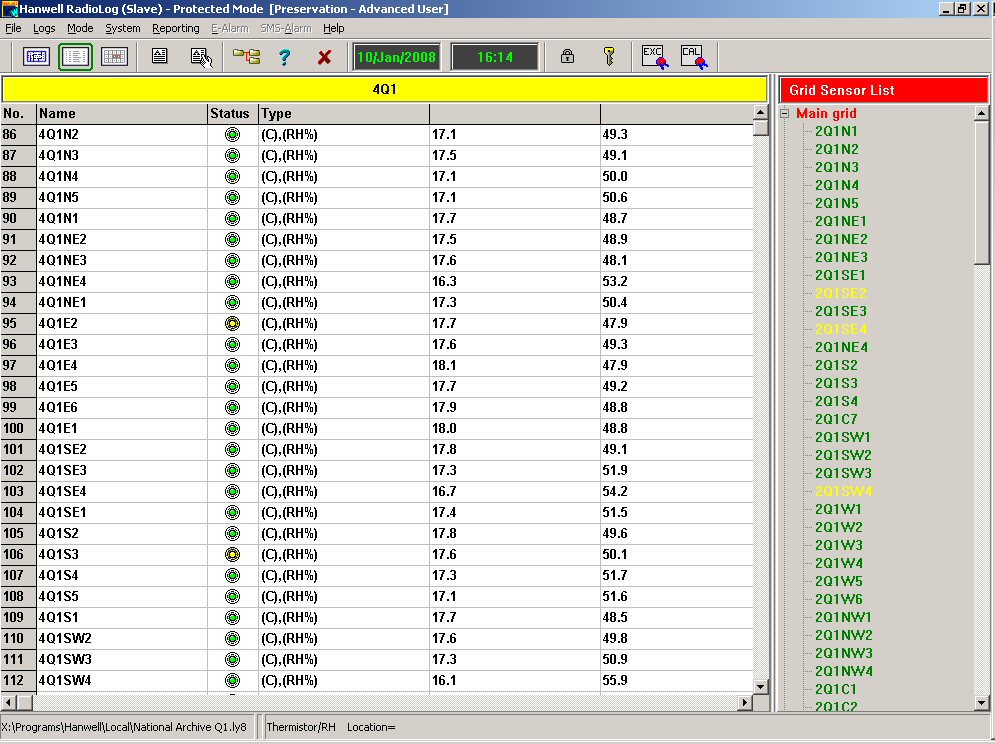Every morning when I turn on my computer, one of the first things I fire up is our environmental monitoring software so I can have a look at the temperature and relative humidity (RH) across our storage areas.
Every institution caring for any kind of cultural heritage collections makes it a priority to monitor environmental conditions such as temperature and RH (an expression of the amount of moisture in the air) where their collection is stored or displayed. This is because incorrect temperature or RH (too high or too low) can cause or accelerate the breakdown of materials, not only the paper and parchment support of documents but also other materials important to the portrayal of information, such as inks and the dyes used in colour photographic prints.
Monitoring environmental conditions has got to be, on the surface, one of the least interesting or celebrated parts of a conservator’s job, since it requires looking through and assessing long lists of numbers (we have over 180 different sensors in our storage areas), however, this kind of in-depth monitoring has proven truly invaluable to us here at The National Archives. We not only keep track of existing environmental conditions, but also collect data that will enable retrospective analysis. This data allows us to develop a better understanding of our building here at Kew so we can provide the best preservation environment possible for our records while at the same time ensuring that our solutions are sustainable. I’ve highlighted a couple of the projects that we’ve been busy with over the last few years below, including links to papers we’ve written that go into greater detail about the specifics of what we’ve done.
In 2010 we completed our first retrospective Annual Environmental Assessment of our environmental monitoring data from 2008. This illustrated that even though we had an air conditioning system working hard to achieve the same temperature and RH conditions in storage year-round, we were still experiencing some seasonal variations. Generally, we found our storage areas were cooler and dryer in the winter and warmer and more humid in the summer.
We were able to use what we had learned from the data as part of another investigation we were doing – Building Environment Simulation Project. This collaborative project with University College London (UCL) Centre for Sustainable Heritage developed a computer model of some of our storage areas. This means we could simulate the actual environmental conditions experienced inside these spaces. The computer model allowed us to try out different scenarios where we might change something about the building, the amount of material we stored or how we ran the air conditioning system without having to make the actual changes and provided data on how those changes would impact the environmental conditions in storage. The most interesting results showed that switching to an air conditioning set point that changed with the seasons would improve environmental conditions for our records and would significantly reduce the energy load required by the air conditioning equipment.
We’re currently working with our colleagues in Estates and Facilities on the implementation of the recommendations of this project. If you’re interested in more detail on the various preservation environment projects we’ve been working on, check out our article, Understanding an Archive Store on page 15 or leave me a comment below.



Have you moved over to a cloud based document management system? I notice your post is from 2012 so just wondered if you have upgraded your systems.